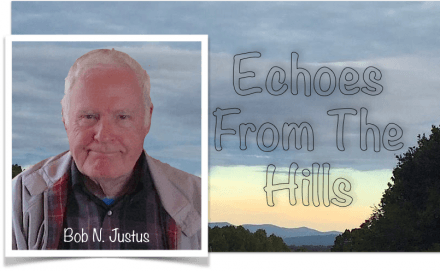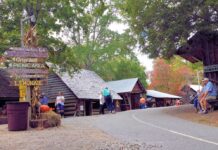
My life began on a Blue Ridge valley farm in a frame house with oak shingle roof built between the forks of two streams, one issuing from a fine spring rising amid a bowl of moss covered rocks under tall poplar trees. Even as a young boy I realized a people lived in the valley long before our time. Every spring when we plowed the large garden by the house pieces of pottery or projectile points turned up. At one time I had a shoe box half full of them.
Cherokee Indians once lived in the Blue Ridge Mountains of NE Georgia and some say a people before their time. Over a period of many years trails were worn up and down the valleys and across gaps into other coves and valleys. One main trail came down from the Highlands area of North Carolina, the route my Ggg-grandparents William and Sarah Troutman Justice traveled by wagon to settle in a small cove under Billy Mountain on Billy Branch Road. This site was within yards of the divide. Waters north of the divide went into the Tennessee River and ended eventually by way of the Ohio and Mississippi Rivers in the Gulf of Mexico. Waters south of it entered the Tallulah River and eventually entered the Atlantic Ocean.
As I grew up I read histories of this area and heard family stories about our blood ties with the Cherokees and with the Scott settlers that filtered down the mountain chain seeking a better life in the fertile valleys where streams swarmed with trout and forests sheltered buffalo, elk, deer, wolves, turkey, grouse and squirrels. In time I began to see with unified eye, mind, and soul the lovely mountains and lush valleys I roamed in my youthful days. I bear them within me to this day.
The Cherokees had been further north in ancient times but migrated southward in a movement that pushed the Creeks further down toward what became Florida. While they had a history of being fierce warriors the Cherokees were intelligent and adapted to changing times. Sequoyah, who was an intelligent, inspired person developed a written language. Although they used legal means and diplomacy, even changed their governing system and customs trying to save their nation, in the end they lost most of their lands and were forced to move west to Indian Territory in Oklahoma. One of them recalled it was “the trail where we cried.” Scattered bands hid in the forested mountains and some even retained legal properties and in time became the Eastern Cherokees of North Carolina.
The Cherokees had talented people like Sequoyah. Mike Daniel, who is related to the Cherokees, as I am, shared some fine Cherokee writings. A Cherokee wrote, “The ridges and ravines have not lost their beauty since our grandfathers hunted game and left their arrowheads for future generations.” I liked “The great horned owl could tell us how its hoot was mimicked by our grandfathers and how it was answered.”
As I grew up in beautiful Germany Valley I thought, “This shall always be here for me.” The Cherokees no doubt thought so until the settlers arrived. I wrote the following in an article, “A folk walked these paths long ago before my people came here and blurred their tracks in the sand. Now I can yet feel their tears as I seek old paths and feel spirits walking near.”







